
Skate Helmet
Place of Origin: Mainland China
Model Number: CG-B009
Material: America imported EPS Foam + PC Shell + integrated peak + rear LED light
Technology:In-Mould
Air vents: 12
Weight: 270g
Certification:CE EN 1078&CPSC
Age group: Adult and teenager
Color/graphics:Customized
Size: M(55-58CM); L(59-61CM)
Best use: cycling, commuter, city, street bike
● 12 Aero Vents, Amazing Wind Tunnel ventilation design
● Weight: 270g
● Material: America imported EPS Foam + PC Shell + integrated peak + rear LED light
● Technology: EPS+PC in-mold
● Accessories: Flexible patent adjustment,adjustable Nylon chin strap, ITW NEXUS buckle,wick moisture lining pads.
● Certification: CE-EN1078&CPSC certified for impact protection.

HIGH QUALITY:
Lighter weight foams and plastics that provide equal or better impact protection could help reduce neck fatigue and improve comfort. Aerospace and automotive industries are driving material innovations that may transfer to helmets.
Eco-friendly materials like plant-based foams, recycled plastics, and natural fibers would reduce environmental impact. These materials are advancing but need more testing to prove safety.
Smart materials that stiffen on impact, or active cooling materials could dynamically improve protection and comfort. Expect more integration of technology into helmet materials.
PERFECT PROTECTION:
Heavy-duty bike helmet in premium buffering material with high performance is built for both comfort and safety.Unisex design,good for both men,women and youth.
Bicycle helmets play an important role in protecting cyclists from head injuries in the event of an accident. According to a study published in the New England Journal of Medicine, helmets reduce the risk of head injury by nearly 70% and the risk of brain injury by nearly 65%.
Wearing a properly fitted bicycle helmet each time you ride is the single most effective way to prevent or reduce head and brain injuries. The inner liner absorbs the energy from the impact to minimize the force transmitted to the head. The hard outer shell spreads the force over a broader area so less of it is transmitted to the rider's skull.
While no helmet can prevent all head injuries, choosing a quality helmet and wearing it on every ride can greatly reduce the risk of permanent injury. Proper helmet use should be part of every cyclist's basic safety practices.
VENTILATION AND REAR LIGHT:
Perfect combination of rear taillights and vents for safety and comfort
Proper ventilation is crucial for a safe and comfortable bicycle helmet. Helmet vents allow air to flow through the helmet, cooling the rider's head. The number, size, shape, and placement of vents all factor into a helmet's ventilation system.
Most quality helmets have between 12-25 vents. More vents provide better airflow, but also compromise the helmet's structure. Large front vents pull air into the helmet, while rear vents expel warm air. Top vents assist with updraft. The best helmets find a balance between sufficient ventilation and safety.
Vent design affects airflow too. Vents with smoothed edges and contoured shapes improve airflow. Strategic vent placement draws air over hot spots like the forehead. Channels between vents guide air through the helmet. Some helmets integrate ventilation into the retention system with padded cups that lift the helmet slightly off the head.
Advanced helmets use computational fluid dynamics (CFD) software to optimize vent design. CFD models air movement to pinpoint areas of high heat concentration. Engineers tweak vent shapes and placements to target ventilation to these hot spots. Prototypes are then wind tunnel tested to confirm ventilation efficacy.
COMFORT PADDING:
The comfort padding inside a helmet is a crucial component for rider safety and enjoyment. The padding serves multiple purposes - absorbing impact, wicking away moisture, preventing the helmet from rubbing, and ensuring a proper fit.
The padding production starts with cutting foam or fabric materials into the required shapes and sizes. The foam can be open or closed-cell, with open-cell being more breathable and closed-cell providing more support. The fabric is often a technical performance material designed to wick sweat.
Precise die cutting machines are used to cut the padding pieces efficiently and accurately. The pieces are then assembled into pads and inserted into designated areas inside the helmet lining. This is done either by hand or using specialized equipment for large scale production.
ADJUSTABLE BUCKLES:
Equipped with durable quick release buckle and adjustable dial,make this snowboard helmet suitable for different head circumference and comfortable to wear.
The straps and buckles are key components that allow the helmet to be properly secured to the rider's head. Most quality bike helmets use nylon for the straps. Nylon is a strong, flexible, and durable material that is well-suited for straps that need to withstand frequent adjustments and tension.
The nylon straps are produced through an extrusion process where the molten nylon material is pushed through a die into long strands that are then cooled and solidified. These strands are stretched and woven together to create nylon straps with the desired width and thickness.




Factory Size & Workforce
Total area: 18,000 m²
Total employees: 210
Dongguan Factory: approx. 200 staff (50 office staff, 150 production workers)
Yueyang Factory: approx. 150 staff (35 office staff, 115 production workers)
Production Equipment & Capabilities
In-house capabilities include mold manufacturing, printing, vacuum forming, injection molding, in-mold production, painting, labeling, and packaging (partial outsourcing for specialized packaging).
Production Capacity
Daily Output: 5,000 helmets
Monthly Output: approx. 150,000 helmets
Quality Control Process
Pre-production sample completed before mass production
Customer approval based on signed sample
Mass production strictly follows approved reference
Third-party inspection arranged by customers (full inspection or random sampling) before shipment
International Certifications
CE EN1078 | CPSC | ASTM | AS/NZS | UKCA
Annual Sales Turnover
Approx. RMB 95 million
Main Product Categories
Bicycle helmets
Ski helmets
Equestrian helmets
Riot helmets
Industrial safety helmets
Climbing helmets
Water sports helmets
Skydiving helmets
Export Markets
Switzerland, Sweden, Czech Republic, Germany, United Kingdom, United States, Japan, Norway, Italy, France, Netherlands, Indonesia, Singapore, Thailand, and Australia
Key Partners & Brands
SWEET (Norway): Ski helmets, cycling helmets, water helmets, protective helmets
AGU (Netherlands): Cycling helmets, safety helmets
GIANT (China): Bicycle helmets, safety helmets
LIIMAR (Italy): Cycling helmets, safety helmets
Helmet Quality Control Process
At CGPRO Helmets, every helmet undergoes a comprehensive, multi-stage quality inspection process to ensure consistent safety, durability, and international compliance. From raw material to final packaging, we enforce strict control measures to guarantee outstanding product quality for global clients.
1. Incoming Quality Control (IQC)
All raw materials are tested upon arrival to meet strict safety and performance criteria.
EPS foam density & consistency
PC/ABS shell material verification (impact & burn test)
Webbing and buckle tensile strength testing
Non-toxic ink & decal inspection (odor and adhesion check)
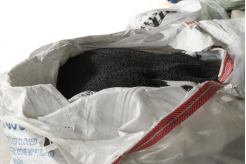
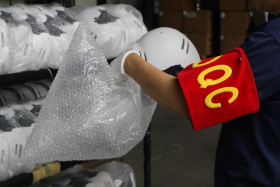
2. In-Process Quality Control (IPQC)
We implement process checks at each key production stage to prevent defects from entering the next phase.
Injection molding: Surface flatness, no cracks or shrink marks
EPS shaping: Uniform thickness and bonding quality
In-mold shell & EPS bonding strength
Interior padding alignment, sewing, and glue adhesion

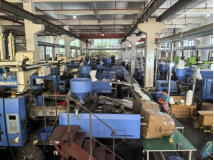
3. Final Quality Control (FQC)
Before packaging, all helmets are fully inspected for overall quality, fit, and function.
100% visual inspection for appearance
Shell stability and deformation test
Strap & adjustment system function test
Size and fitting confirmation using model headforms

4. Laboratory Testing (EN/ASTM/CE/ISO Standards)
Our in-house lab and third-party partners conduct critical safety tests in accordance with international certifications.
Impact absorption test (EN1078 / ASTM F1447 / EN397)
Penetration resistance (EN12492 / EN1385)
Chin strap strength and retention system durability
High/low temperature resistance and UV stability
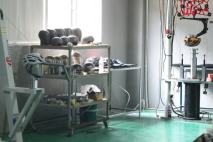
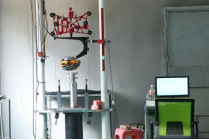
5. Outgoing Quality Control (OQC)
Before shipping, we conduct random sampling inspections to ensure batch consistency and package integrity.
AQL-based visual & functional check
Barcode, label, and accessory verification
Final inspection report and shipping approval
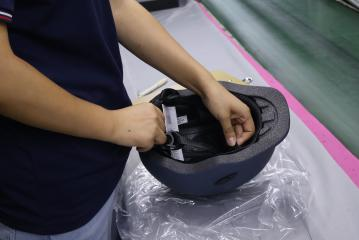


Case: OEM Polo Helmet with Carbon Fiber Shell & Retractable Visor
Client Need:
In July 2024, a Dubai-based polo helmet client approached us, seeking an OEM & ODM manufacturer capable of delivering a fully customized solution. Their requirements included a wide brim, retractable sun visor, lightweight design, and certification under PAS and SEI standards.
Our Solution:
After a detailed review of the client’s needs, we created a 3D model and produced 3D-printed prototypes to confirm structure and aesthetics. Upon approval, we developed four size molds. To ensure certification readiness while achieving lightweight performance, we recommended a 100% carbon fiber outer shell paired with a high-performance, lightweight EPP liner. The retractable visor was engineered as a signature feature of the helmet.
Result:
The helmet is currently in the testing phase. The client has expressed strong satisfaction with the design and engineering approach, and collaboration is expected to expand once certification is complete.

We have set up a design department in order to meet the different customers;
Our designers will design the most creative and most innovative helmet in different styles one step ahead the market trends and meets the safety standards, such as CPSC, CE and ASTM. Our sales department and Customer Services provide all the needs to take care of Quality Control and On Time Delivery for Domestic and International market. What's more, we have our own EPS molding plant
































